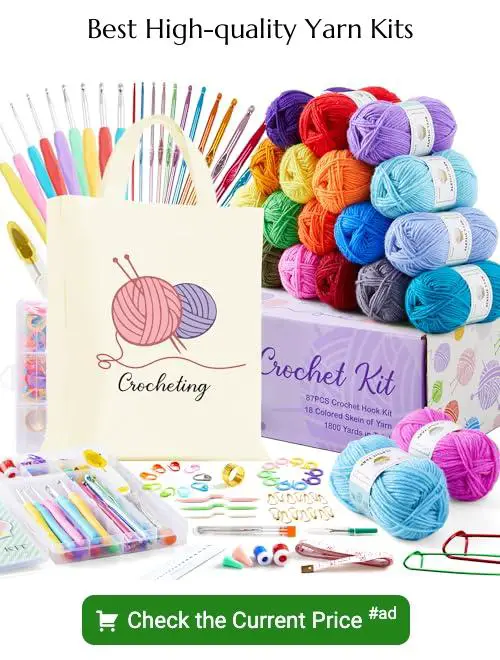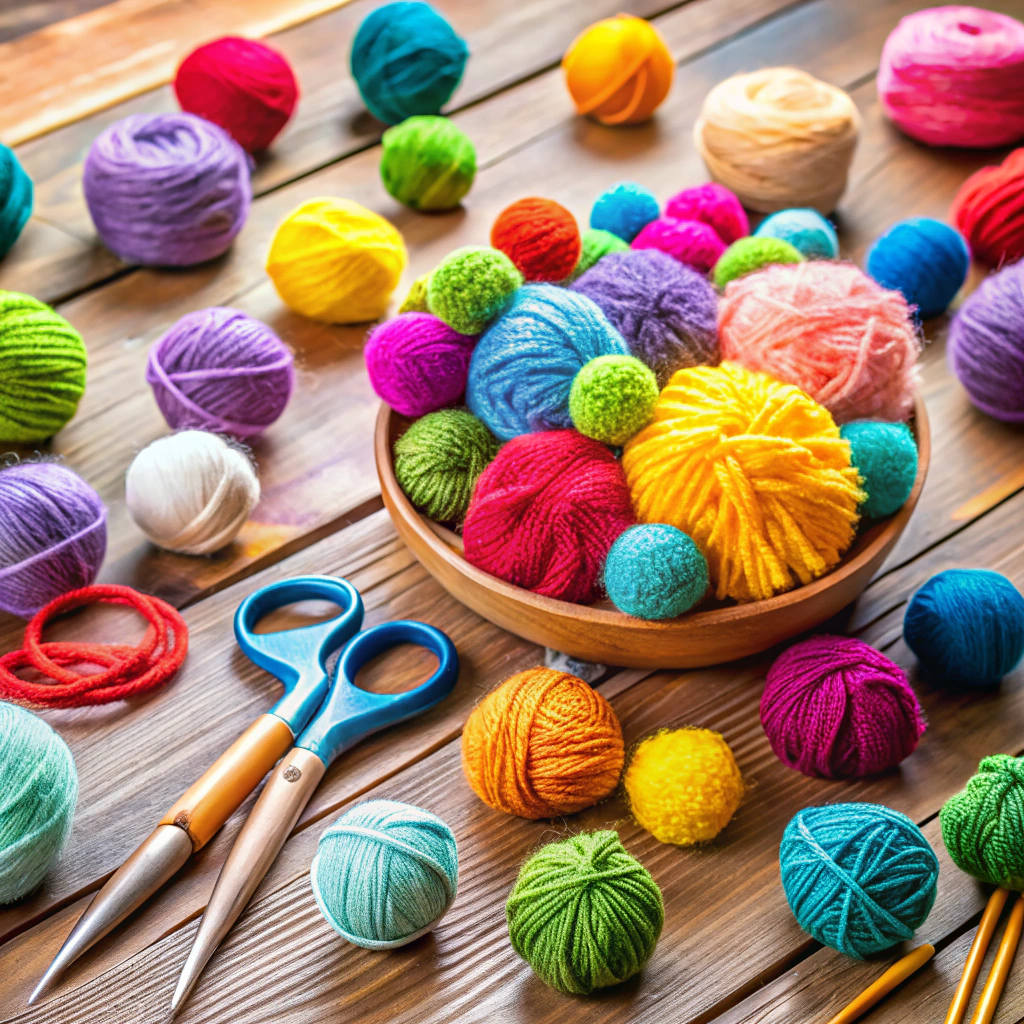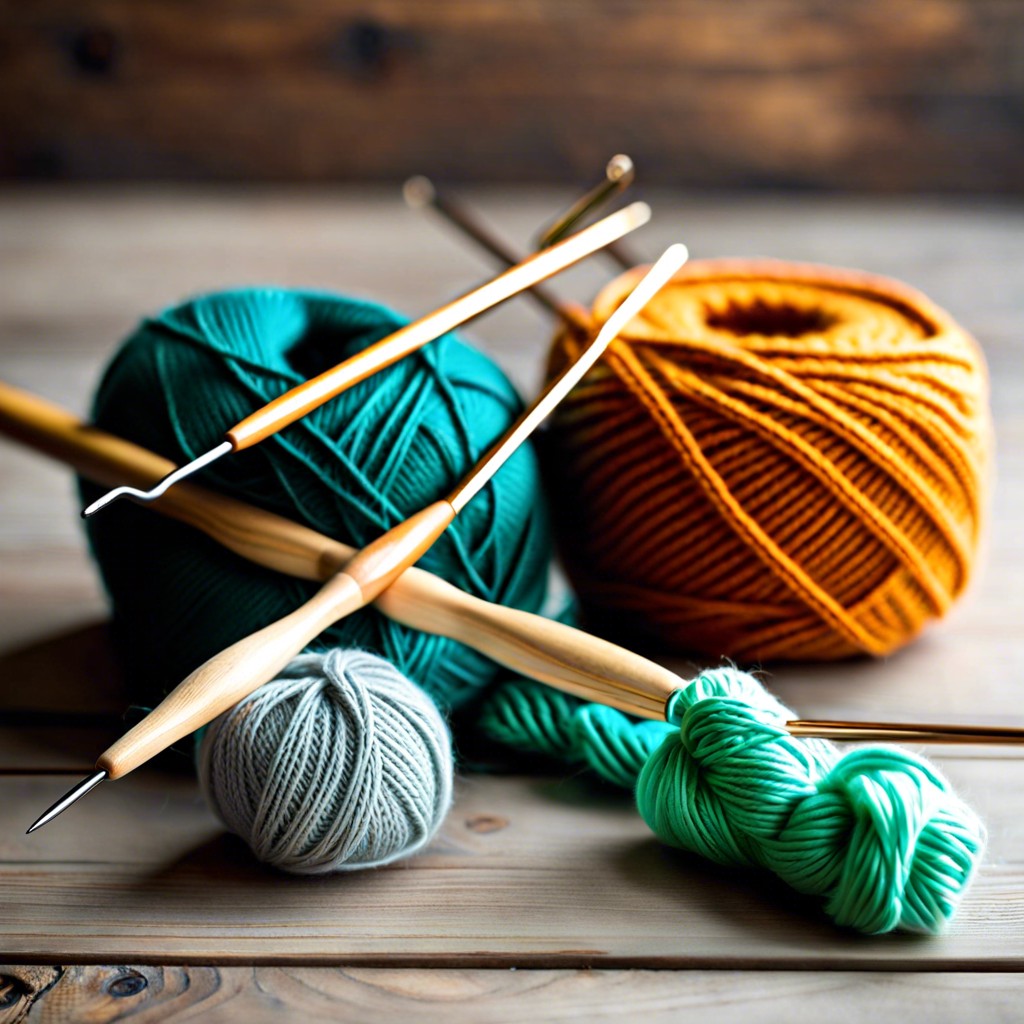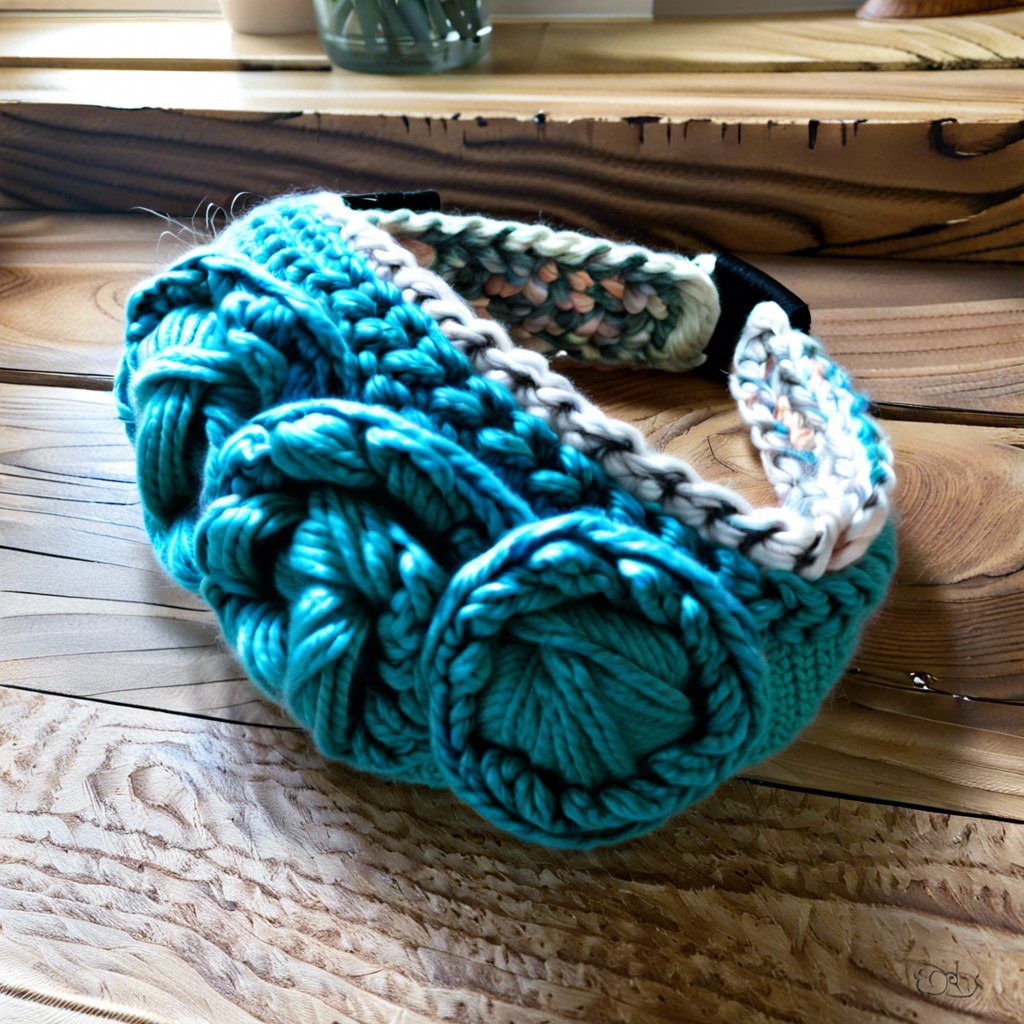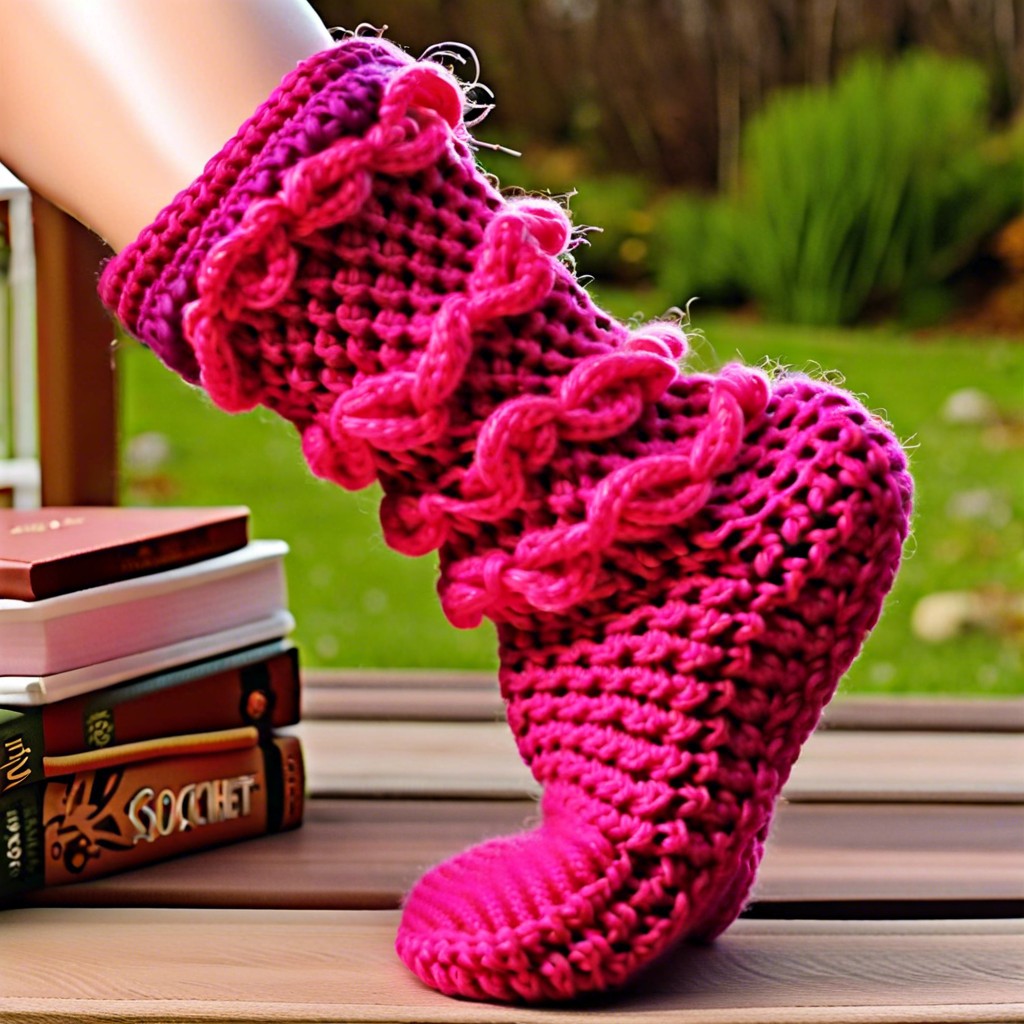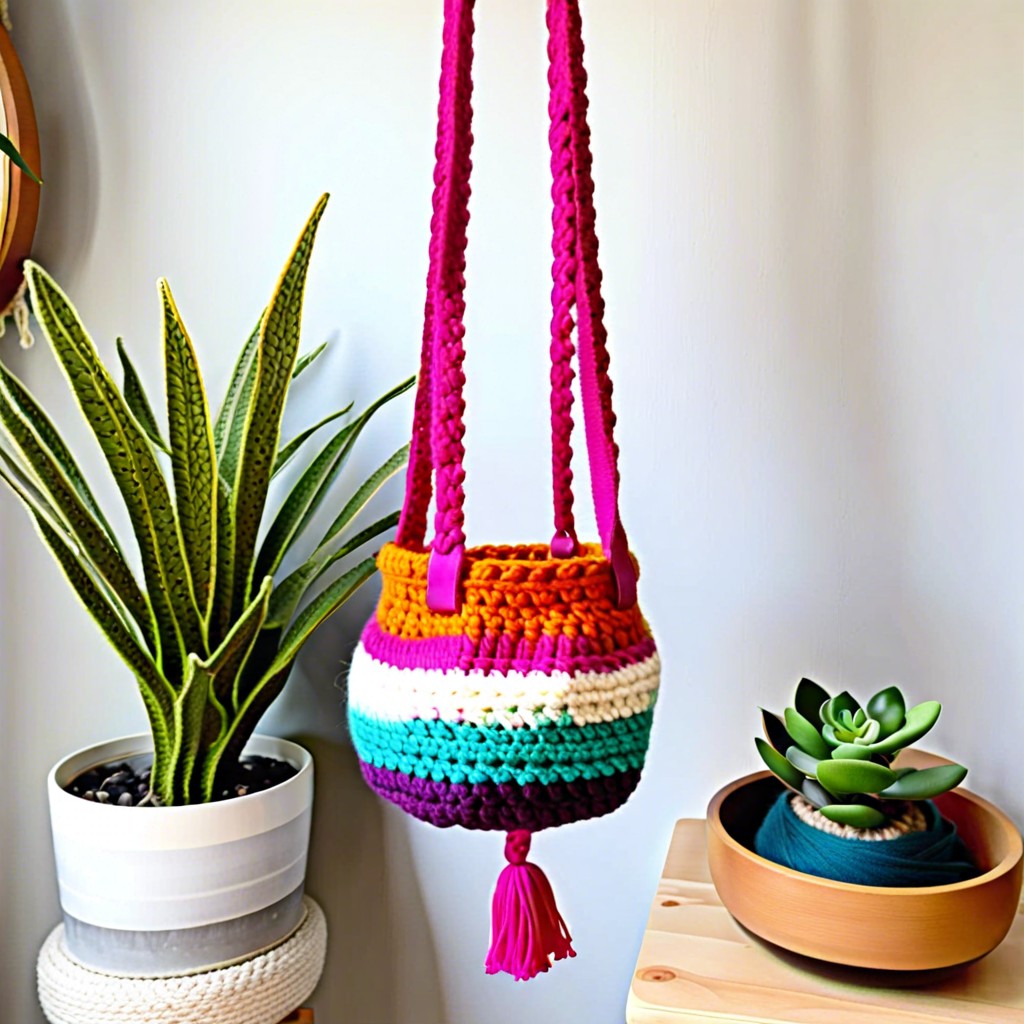Discover the wonderful world of yarn fabric as we delve into its various types, exploring their unique characteristics and uses in this informative blog post!
Are you a yarn enthusiast looking to expand your knowledge on different types of yarn fabric? Or maybe you’re just starting out in the world of crocheting and knitting and feel overwhelmed by all the options available. Either way, this blog post is for you! In this article, we’ll explore various types of yarn fabrics, their characteristics, and how they can be used in your next project.
From soft and fluffy to durable and strong, there’s a type of yarn for every preference. So sit back, grab your favorite crochet hook or knitting needles, and let’s dive into the world of yarn fabric!
Wool
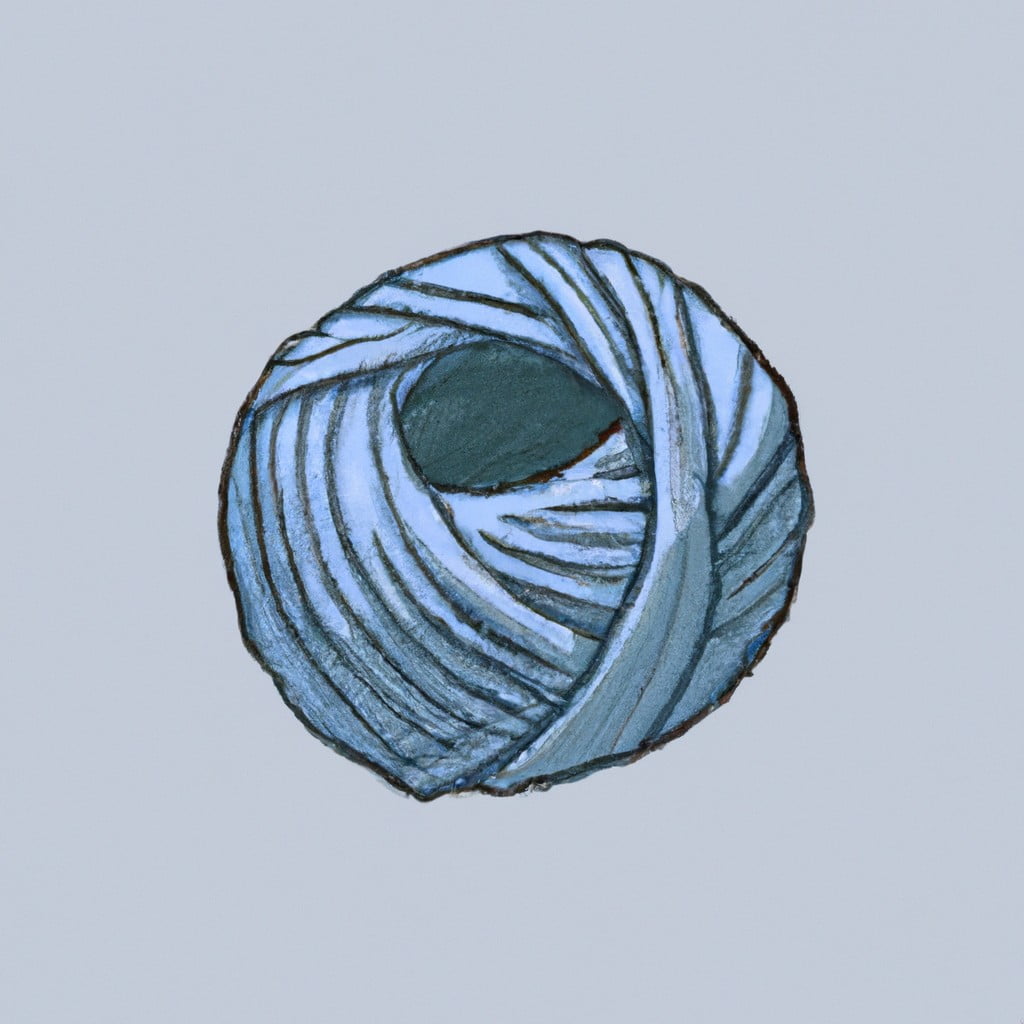
Wool is one of the most popular types of yarn fabric, and for good reason. It’s warm, soft, and versatile.
Wool comes from sheep but can also be sourced from other animals such as goats (cashmere), rabbits (angora), or llamas.
One of the great things about wool is that it comes in a variety of textures and weights. From fine merino wool to chunky Icelandic wool, there’s a type for every project.
Wool is also easy to care for – many varieties are machine washable on gentle cycles or can be hand washed with mild detergent. However, some wools may require special care due to their delicate nature.
Alpaca
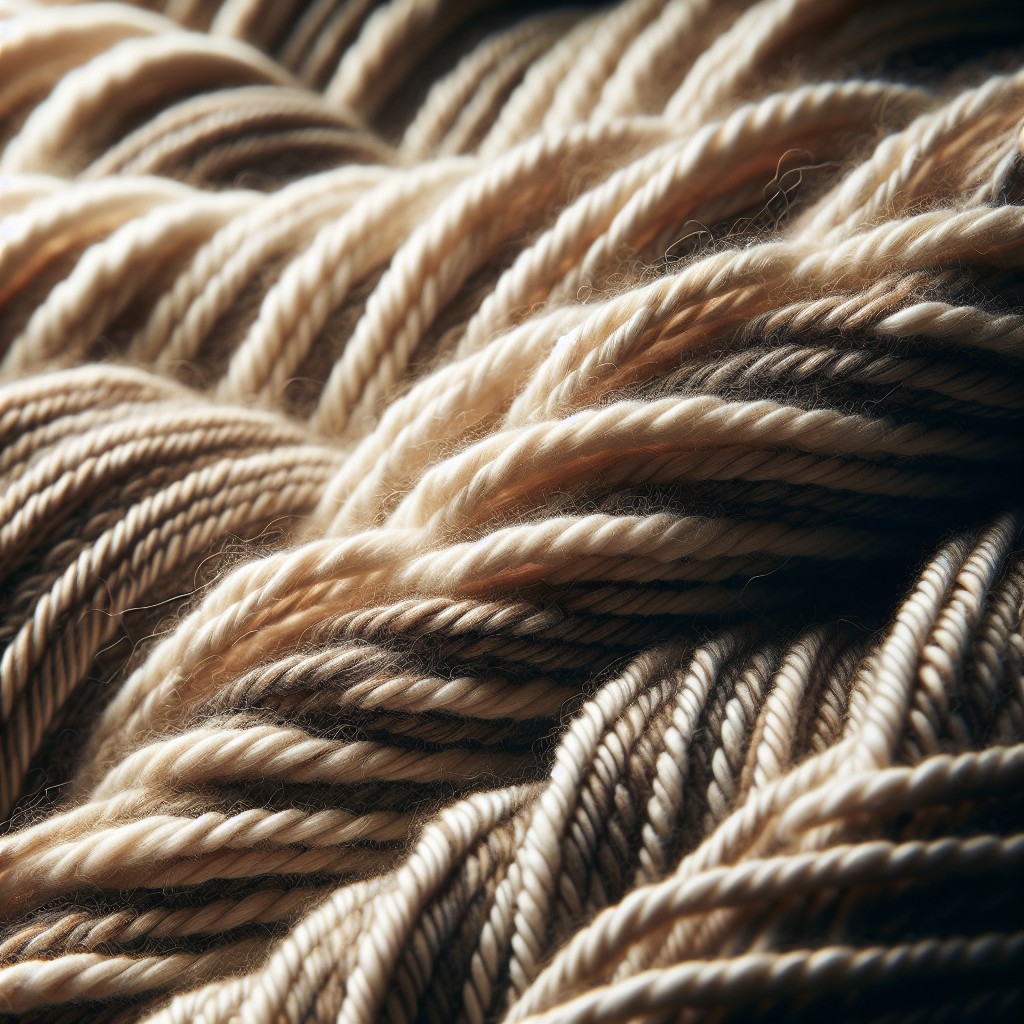
Alpacas are native to South America and have been bred for their wool for thousands of years. The fiber from alpacas is hypoallergenic, making it an excellent choice for those with sensitive skin.
There are two types of alpaca fibers: Huacaya (pronounced wah-KI-ya) which has a fluffy appearance similar to sheep’s wool; Suri (SOO-ree), which has long silky locks that drape beautifully in finished projects.
Alpaca yarn comes in various weights ranging from lace weight to bulky weight. It can be used alone or blended with other fibers such as silk or cashmere for added luxury.
When working with alpaca yarn, it’s important to note that it tends to stretch out over time due to its natural elasticity. To avoid this issue, consider using smaller needles or hooks than what the pattern calls for when knitting or crocheting your project.
Cashmere
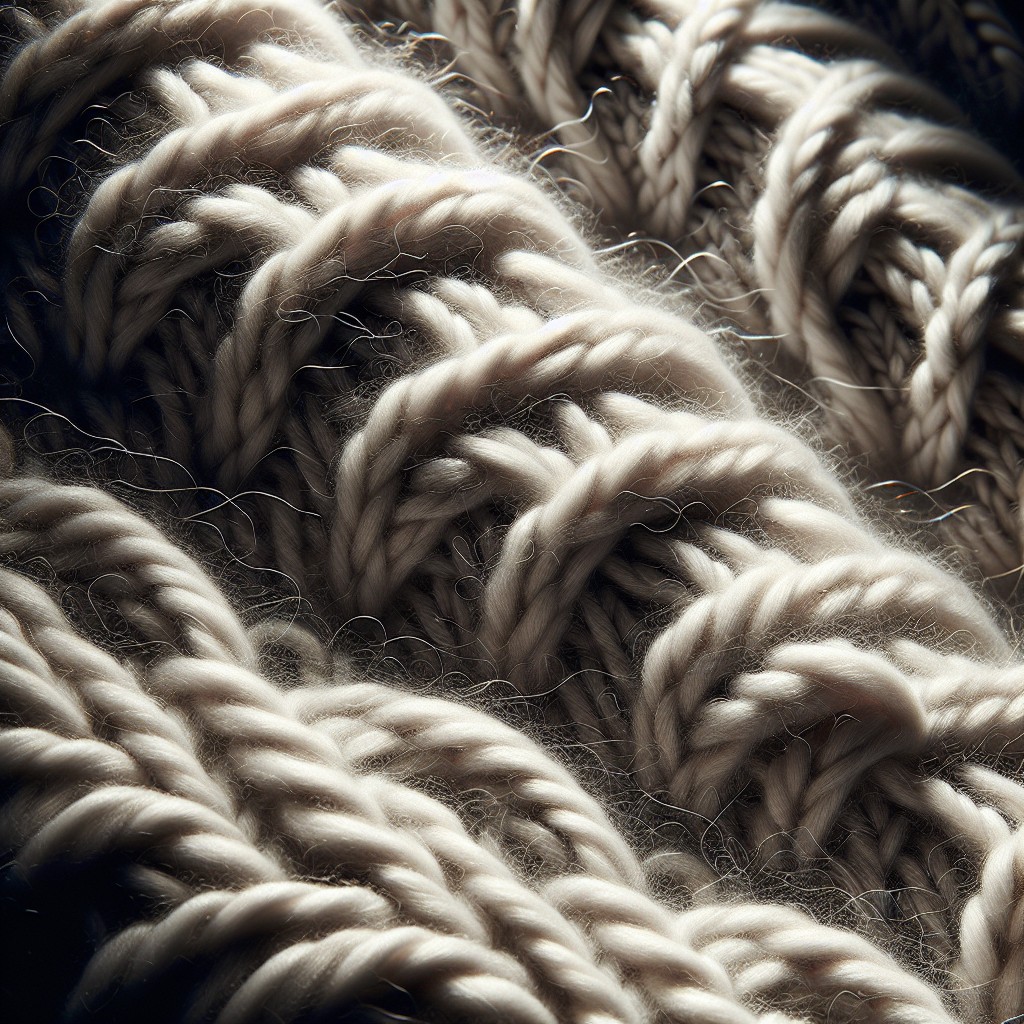
It comes from the undercoat of cashmere goats, which are primarily found in Mongolia, China, Iran, Afghanistan and other Central Asian countries. The fibers are finer than wool fibers and have a natural crimp that makes them ideal for spinning into yarn.
Cashmere has excellent insulation properties while still being lightweight. This makes it perfect for creating warm garments like sweaters or scarves without adding bulk to your outfit.
Cashmere also has an incredibly soft texture that feels gentle against the skin.
While cashmere can be more expensive than other types of yarn fabrics due to its rarity and high demand, it’s worth investing in if you’re looking to create something truly special with exceptional quality material.
Mohair
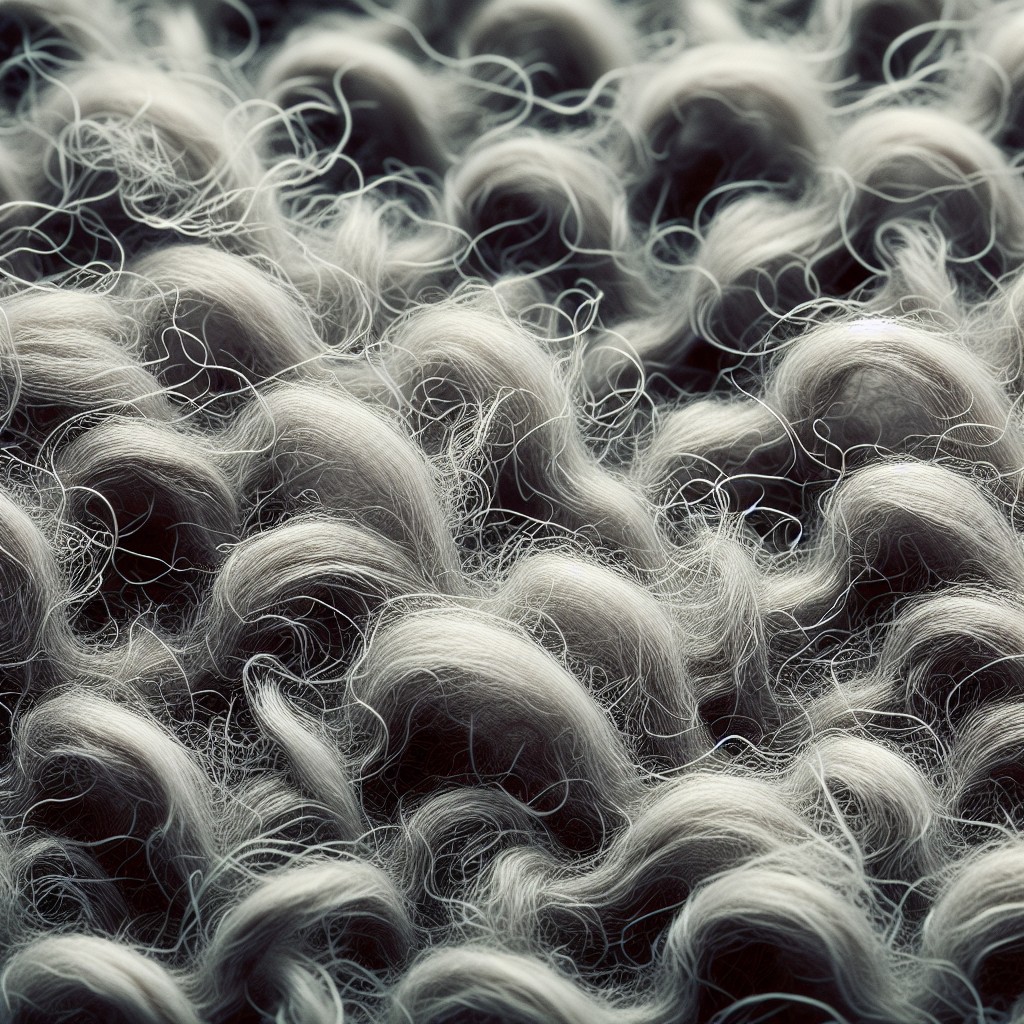
It’s known for its softness, luster, and durability. Mohair fibers are naturally elastic and have a unique texture that makes them perfect for creating fluffy garments like scarves, shawls, and sweaters.
One thing to keep in mind when working with mohair is that it can be quite slippery due to its smooth surface. This means you’ll need to use smaller needles or hooks than you would with other types of yarns to prevent your stitches from slipping off.
Another benefit of using mohair is its insulating properties – it’s warm enough for winter wear but also lightweight enough for spring or fall garments. Plus, because it doesn’t pill easily like some other fibers do (such as wool), your finished projects will look great even after multiple wears.
Angora
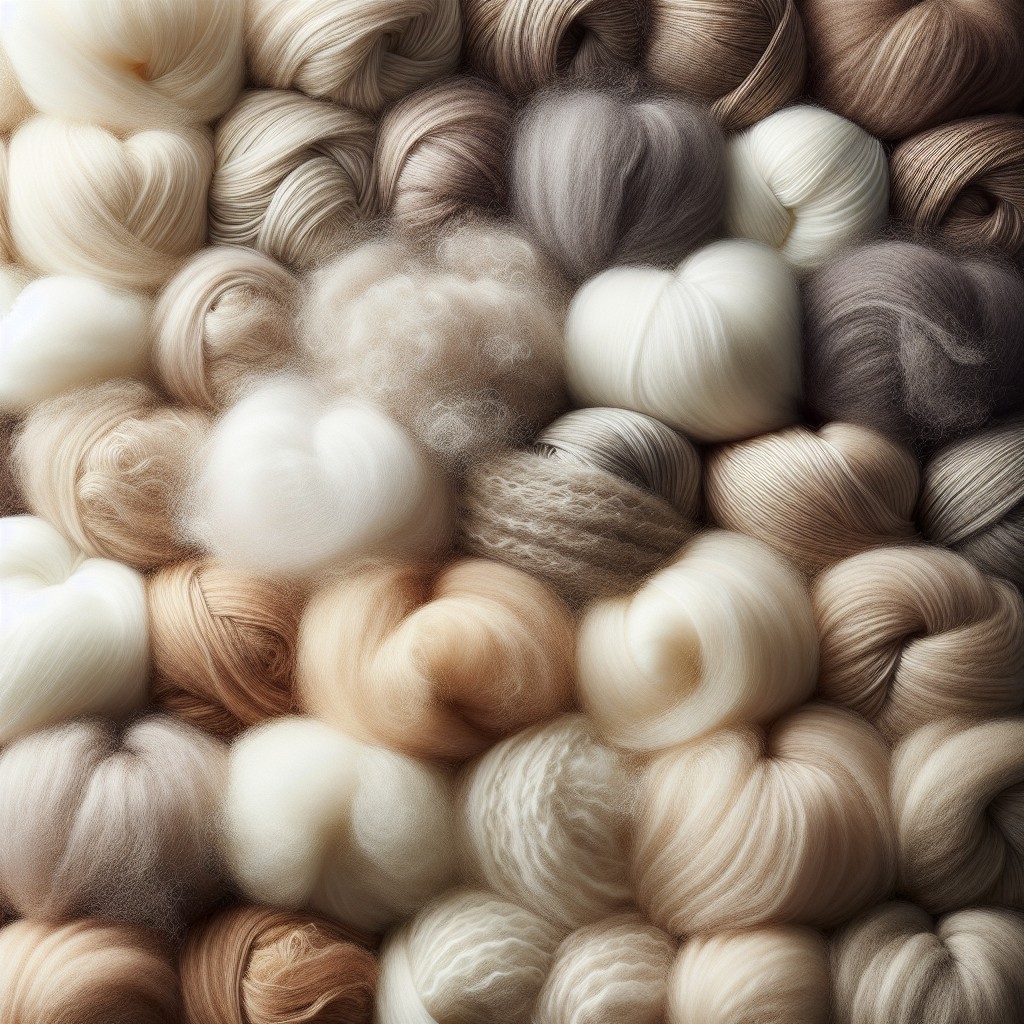
It’s known for its fluffy texture, warmth, and silky sheen. This type of yarn is perfect for creating cozy winter garments such as scarves, hats, sweaters or blankets.
One thing to keep in mind when working with angora yarn is that it can shed quite a bit during the knitting or crocheting process. To minimize shedding while working with this delicate fiber, try winding your skein into a ball before starting your project instead of pulling directly from the skein.
Another important consideration when using angora yarn is its care instructions. Due to its delicate nature and tendency to mat easily if not cared for properly; hand washing in cool water with mild detergent followed by gentle squeezing out excess water without wringing will help maintain both color vibrancy and shape integrity over time.
Llama
Llama wool is hypoallergenic, making it an excellent choice for those with sensitive skin. It’s also lightweight and warm, making it perfect for winter garments such as hats and scarves.
One of the unique characteristics of llama wool is its lack of lanolin oil. This means that llama fiber doesn’t require harsh chemicals to clean before spinning into yarn like other types of animal fibers do.
Another benefit to using llama fiber in your projects is its durability. Llama wool can withstand wear and tear better than many other natural fibers due to its strength.
Cotton
It’s made from natural fibers and is known for its softness, breathability, and absorbency. Cotton yarn comes in different weights, ranging from fine to bulky, making it versatile for various projects such as dishcloths, baby blankets or summer garments.
One of the benefits of cotton yarn is that it can be machine washed and dried without losing its shape or color. This makes it an ideal choice for items that require frequent washing like kitchen towels or children’s clothing.
Another advantage of cotton yarn is its hypoallergenic properties which make it suitable for people with sensitive skin or allergies to synthetic materials.
When choosing a cotton yarn type consider factors such as weight (thickness), texture (smooth vs textured), ply (single vs multiple strands twisted together) and color availability.
Silk
It’s made from the fibers of the silkworm cocoon, which are carefully harvested and spun into fine threads. Silk yarn is known for its lustrous sheen, softness, and durability.
One of the most significant benefits of silk yarn is its versatility. It can be used to create a wide range of garments or accessories such as scarves, shawls, blouses or dresses due to its lightweight nature.
Another advantage of silk yarn is that it drapes beautifully when knitted or crocheted in lace patterns making it perfect for elegant evening wear projects like wraps or stoles.
However, working with silk can be challenging because it tends to slip off needles easily due to its smooth texture. Also note that not all types are machine washable so always check care instructions before washing your finished project!
Linen
It’s made from the fibers of the flax plant, which are spun into long, strong threads. Linen is known for its crisp texture and ability to keep you cool in hot weather.
One of the benefits of using linen yarn fabric in your projects is that it becomes softer with each wash while still maintaining its strength. This makes it an excellent choice for items like dishcloths or towels that need to withstand frequent use and washing.
Linen also has a unique drape when compared to other types of yarn fabrics, making it ideal for garments like dresses or blouses where you want a flowing silhouette.
When working with linen yarn fabric, keep in mind that it can be stiff at first but will soften over time. It’s also important to note that linen tends to have more slubs (thick spots) than other types of yarn fabrics due to variations in the flax fibers’ thicknesses.
Bamboo
It’s made from bamboo grass, which grows quickly and abundantly without the need for pesticides or fertilizers. This makes it an eco-friendly option for those who are conscious about their environmental impact.
Bamboo yarn has a silky texture that feels soft against the skin, making it perfect for clothing items such as scarves, shawls, and sweaters. It also has natural moisture-wicking properties that make it ideal for summer garments.
One thing to keep in mind when working with bamboo yarn is its tendency to split easily due to its slippery nature. However, this can be remedied by using sharp needles or hooks and taking care not to pull too tightly on your stitches.
Bamboo yarn is an excellent choice if you’re looking for a sustainable option with unique characteristics that set it apart from other types of fiber.
Hemp
Made from the fibers of the hemp plant, this yarn is known for being strong, breathable, and resistant to mold and mildew. It’s also hypoallergenic, making it a great choice for those with sensitive skin.
One unique characteristic of hemp yarn is its ability to soften over time with use and washing while still maintaining its strength. This makes it an excellent choice for items like bags or backpacks that need to withstand daily wear-and-tear.
In addition to being environmentally friendly due to its sustainable production process (hemp requires less water than cotton), hemp yarn can also be dyed easily using natural dyes such as indigo or madder root.
Acrylic
It’s made from synthetic fibers, which means it’s easy to care for and can be machine-washed without losing its shape or color. Acrylic yarn comes in a wide range of colors, making it perfect for creating vibrant projects that pop.
One of the benefits of acrylic yarn is that it’s hypoallergenic, making it an excellent option for those with sensitive skin or allergies. Acrylic yarn doesn’t shrink like natural fibers such as wool or cotton do when washed.
While some may argue that acrylic lacks the softness and warmth found in natural fibers like wool or alpaca, there are plenty of high-quality options available on the market today that offer both comfort and durability.
Polyester
It’s made from petroleum, which means it’s not biodegradable like natural fibers such as wool or cotton. However, polyester yarns are often blended with other fibers to create unique textures and properties.
One of the benefits of using polyester yarn is that it’s easy to care for – it can be machine washed and dried without shrinking or losing its shape. This makes it an excellent choice for items like blankets, scarves, hats, and gloves that will see frequent use.
Polyester yarn also comes in a wide range of colors and finishes – from matte to shiny – making it versatile enough for many different types of projects. It can even be used as a substitute for silk because of its similar sheen.
Rayon
It’s known for its softness, drape, and breathability, making it an excellent choice for summer garments. Rayon can be dyed in a wide range of colors and has a lustrous sheen that gives it an elegant look.
One thing to keep in mind when working with rayon is that it tends to stretch out over time, so you’ll want to take this into account when choosing your pattern or adjusting your gauge. Rayon can be prone to shrinkage if not cared for properly.
Overall though, rayon is a versatile and affordable option for many different types of projects including clothing items like dresses or blouses as well as home decor such as curtains or tablecloths.
Nylon
It quickly became popular due to its durability, strength, and elasticity. Nylon yarn is often used for making socks, swimwear, and athletic wear because of its moisture-wicking properties.
One of the benefits of using nylon yarn in your projects is that it’s easy to care for. It can be machine washed and dried without losing its shape or color.
Nylon yarn comes in a variety of colors and textures which makes it perfect for creating unique pieces.
However, there are some downsides to using nylon yarn as well. While it’s strong and durable when dry; when wet or exposed to heat (such as ironing), it can lose some strength which may cause your project not hold up over time.
Yarn Fiber Blends
Yarn fiber blends are made by combining two or more types of fibers to create a unique blend with specific characteristics. For example, wool and silk can be blended together to create a soft and luxurious yarn with excellent drape.
Blending different types of fibers can also improve the durability and strength of your project while maintaining its softness. Cotton-polyester blends, for instance, make great dishcloths because they absorb water well but dry quickly.
When choosing a fiber blend, consider what qualities you want in your finished product. Do you want it to be warm? Soft? Durable? Lightweight? By blending different types of fibers together in varying proportions (e.g., 70% wool/30% alpaca), you can achieve the desired effect.
Experimenting with various fiber combinations is an exciting way to add texture and depth to your projects while creating something truly unique!.
Novelty and Specialty Yarn Types
These yarns come in a variety of textures, colors, and materials that can make any project stand out. Some popular novelty yarns include eyelash or fur-like fibers that create a fluffy texture when knitted or crocheted.
Ribbon yarn is another type of novelty fiber that creates an interesting texture when used for scarves or shawls.
Specialty yarn types include those made from recycled materials such as plastic bottles, denim scraps, or even old t-shirts! These eco-friendly options are perfect for those who want to reduce their carbon footprint while still enjoying the art of knitting or crocheting.
When using novelty and specialty yarns in your projects it’s important to keep in mind their unique characteristics. They may be more difficult to work with than traditional fibers due to their varying thicknesses and textures so it’s best practice always read the label before starting on your project.
How to Choose a Yarn Type for Your Project
First and foremost, think about what you want your finished product to look like. Do you want something soft and fluffy or more structured? Next, consider the fiber content of the yarn.
Different fibers have different characteristics that can affect how your project turns out.
For example, wool is a popular choice for its warmth and durability but may not be suitable for those with sensitive skin or allergies. Cotton is breathable and easy to care for but lacks elasticity compared to other fibers like silk or nylon.
Another factor in choosing yarn type is weight category – from laceweight (the thinnest) up through super bulky (the thickest). The weight of the yarn will determine how fine or chunky your stitches will appear in addition to affecting drape.
Lastly, don’t forget about color! Yarns come in an array of colors ranging from solids through variegated hues which can add depth and interest into any pattern.
Yarn Type Comparison Chart
One of the most important is the type of fiber used in the yarn. Each type of fiber has its own unique characteristics that can affect how your finished project looks and feels.
To help you make an informed decision, we’ve created a handy Yarn Type Comparison Chart that outlines some common types of fibers used in yarns and their properties. This chart includes information on wool, alpaca, cotton, silk, bamboo and more.
Best Knitting Yarn for Allergies and Sensitive Skin
Luckily, there are many options available that are gentle on the skin and won’t cause irritation. One of the best choices for those with allergies is organic cotton yarn.
This type of yarn is made from natural fibers and doesn’t contain any harsh chemicals or dyes that could trigger an allergic reaction.
Another great option for sensitive skin is bamboo yarn. Bamboo has natural antibacterial properties which make it resistant to odors and mildew growth, making it ideal for people who suffer from allergies or have sensitive skin.
If you’re looking for something even softer than cotton or bamboo, consider using alpaca wool instead of traditional sheep’s wool. Alpaca fiber contains no lanolin (a common allergen found in sheep’s wool) which makes it hypoallergenic and perfect for anyone who suffers from eczema or other types of dermatitis.
Best Yarn Type for Beginners
With so many options available, it’s hard to know where to start. But fear not! As a beginner, there are certain types of yarn that are easier to work with than others.
Acrylic is one such type that is perfect for beginners. It’s affordable and widely available in craft stores and online shops.
Acrylic also comes in a variety of colors and textures, making it easy for beginners to experiment with different styles without breaking the bank.
Another great option for beginners is cotton yarn. Cotton has a smooth texture which makes it easy on your hands as you learn how to crochet or knit stitches correctly without getting caught up on rough fibers like wool or mohair might do.
Ultimately though, when choosing your first ball(s) of yarn consider what project you want them for – if they’re going into something small like dishcloths then cotton may be best; but if larger projects (like blankets) acrylic could save money while still providing quality results!.
Types of Yarn: Printable Summary
You can print it out and keep it with your crafting supplies or save it to your computer for easy access. With this printable summary, you’ll never forget which type of yarn is best suited for your next project!
Yarn Weight Categories & Conversion Explained
Yarn weight refers to the thickness of a strand of yarn and can vary from very fine (lace) to super bulky. Each category has its own recommended hook or needle size, making it easier for you to choose the right tools for your project.
The most common yarn weight categories are:.
- Lace
- Fingering/sock
- Sport/DK
- Worsted/Aran
- Bulky/Rug
It’s important to note that not all brands use these exact terms, so be sure to check each brand’s specific guidelines before purchasing.
If you come across a pattern that uses a different measurement system than what you’re used to (such as grams instead of yards), don’t worry! There are plenty of conversion charts available online that can help make sense of any confusion.
Yarn Textures and Why They Matter
Yarn textures can add depth, interest, and dimension to your finished piece. From smooth and sleek to bumpy or fuzzy, there are a variety of textures available that can enhance the look of your work.
Smooth yarns like silk or cotton create a polished finish with clean lines that highlight stitch definition. Bumpy or nubby textured yarns like boucle add visual interest by creating small loops throughout the fabric while still maintaining an overall softness.
Fuzzy textured yarns such as mohair give projects a cozy feel with their halo-like appearance while ribbon-style novelty yarn adds shine and glamour to any design.
It’s essential to consider how texture will affect both the look and feel of your final product before selecting which type of textured-yarn you want for each project.
Single Yarns
They can be spun from a variety of fibers, including wool, cotton, silk or synthetic materials like acrylic or nylon. Single yarns tend to have a smooth texture and drape well when used in projects such as shawls or scarves.
One thing to keep in mind when using single yarns is that they may not be as strong as other types of plied (twisted) yarns. This means that they may not hold up well over time if used for items like socks or sweaters that will receive heavy wear.
However, single ply yarn can add beautiful texture to your project due to its simplicity and natural look. It’s also great for lacework because it allows intricate patterns to stand out without being obscured by multiple strands twisted together.
Ply Yarns
The resulting ply is thicker and stronger than the individual strands, making it a popular choice for projects that require durability such as blankets, scarves, and sweaters. Ply yarns come in different weights ranging from lace to bulky weight.
When choosing a ply yarn for your project, consider the number of plies used to make the strand. A single-ply strand may be softer but less durable compared to multi-ply options which can withstand wear and tear better.
Some examples of common ply types include 2-ply (also known as double knitting), 3-ply (sport weight), 4-ply (worsted weight) among others.
Cord Yarns
This type of yarn is often used for projects that require durability and strength, such as bags, belts, and home decor items like rugs or baskets.
One popular example of cord yarn is jute twine. Jute twine has been used for centuries in various industries due to its strength and durability.
It’s also an eco-friendly option since it’s made from natural fibers.
Another common use for cord yarns is macrame projects. Macrame involves knotting cords together to create intricate patterns and designs such as wall hangings or plant hangers.
When working with cord yarns, it’s important to choose the right size based on your project needs. Thicker cords will provide more stability while thinner ones will be easier to work with when creating detailed designs.
Novelty Yarns
These types of yarns come in a variety of unique styles such as boucle, eyelash, ribbon, ladder or tape. They can be made from different fibers like wool blends with metallic threads for added sparkle or cotton blends with nylon strands for extra strength.
Boucle is one type of novelty yarn that has loops along its length giving it an interesting texture when knitted up. Eyelash yarn looks like fur because it has long strands sticking out at intervals along the thread creating a fluffy effect when used in scarves and hats.
Ribbon Yarn is flat and wide making it perfect for adding decorative touches to garments while Ladder Yarn features small openings between each strand which creates an airy feel ideal for summer tops.
When using novelty yarns keep in mind that they may require special handling during the project since their textures can make them difficult to work with at times.
Textured Yarns
These types of yarns come in various textures, such as boucle, chenille, ribbon, and eyelash. Boucle is a looped texture that creates a bumpy surface on the fabric when knitted or crocheted.
Chenille has a velvety feel due to its short pile fibers that stick out from the core strand of yarn. Ribbon is flat with edges that curl inward towards each other creating an interesting twist effect when worked up into stitches.
Eyelash textured yarn mimics fur with long strands sticking out from the core strand like lashes on an eye lid giving it its name “eyelash”. Textured yarns can be used alone or combined with other types of plain smooth-textured ones for added depth and contrast in your project.
When working with textured yarns keep in mind they may require special handling techniques compared to regular smooth-textured ones because their unique structure makes them more prone to tangling while knitting or crocheting if not handled carefully.
Stretch Yarns
These fibers give the yarn its stretchy quality, making it perfect for projects that require some flexibility and movement. Stretch yarns are commonly used in sportswear, swimwear, and other athletic apparel because they allow for ease of movement during physical activity.
One popular type of stretchy fiber is Lycra®, which is often blended with other materials like cotton or polyester to create a comfortable yet durable fabric. This blend makes it ideal for creating garments like leggings or yoga pants that need to be both flexible and breathable.
When working with stretch yarns in your knitting or crocheting project, keep in mind their unique properties. They may require different needle sizes than non-stretchy fabrics due to their elasticity; using too small needles can cause the fabric to become too tight while larger needles can make it loose and floppy.
Metallic Yarns
These shiny threads can be made from various materials, including polyester, nylon, or even real metal fibers. Metallic yarns come in different weights and textures, ranging from thin and delicate to thick and bold.
If you’re looking for an eye-catching accent for your next crochet or knitting project, metallic yarn is an excellent choice. It’s perfect for adding some shine to scarves, shawls, hats or bags.
You can also use it as an embellishment on clothing items such as sweaters or dresses.
However, working with metallic yarn requires some extra attention due to its unique properties. The thread may be slippery which makes it harder to control while crocheting/knitting; therefore using smaller hooks/needles is recommended when working with this type of material.
FAQ
What are the 3 types of yarn?
The 3 types of yarn are Animal Fibers, Plant Fibers, and Synthetic Fibers.
Which fabric is made from yarn?
Answer: Knitted fabric is made from yarn.
What is the most popular type of yarn?
The most popular type of yarn is worsted yarn, which is a medium-thickness and commonly used yarn, ideal for outdoor wear and winter garments such as hats and thicker sweaters.
What are the differences between natural and synthetic yarns?
Natural yarns are made from plant or animal fibers, while synthetic yarns are created from man-made materials.
How does the yarn’s thickness affect the fabric’s properties?
Yarn thickness affects fabric properties by determining its weight, warmth, durability, and drape.
What is the process of creating yarn from raw materials?
The process of creating yarn from raw materials involves primarily cleaning, carding, and spinning the fibers to transform them into a continuous strand suitable for various textile applications.
